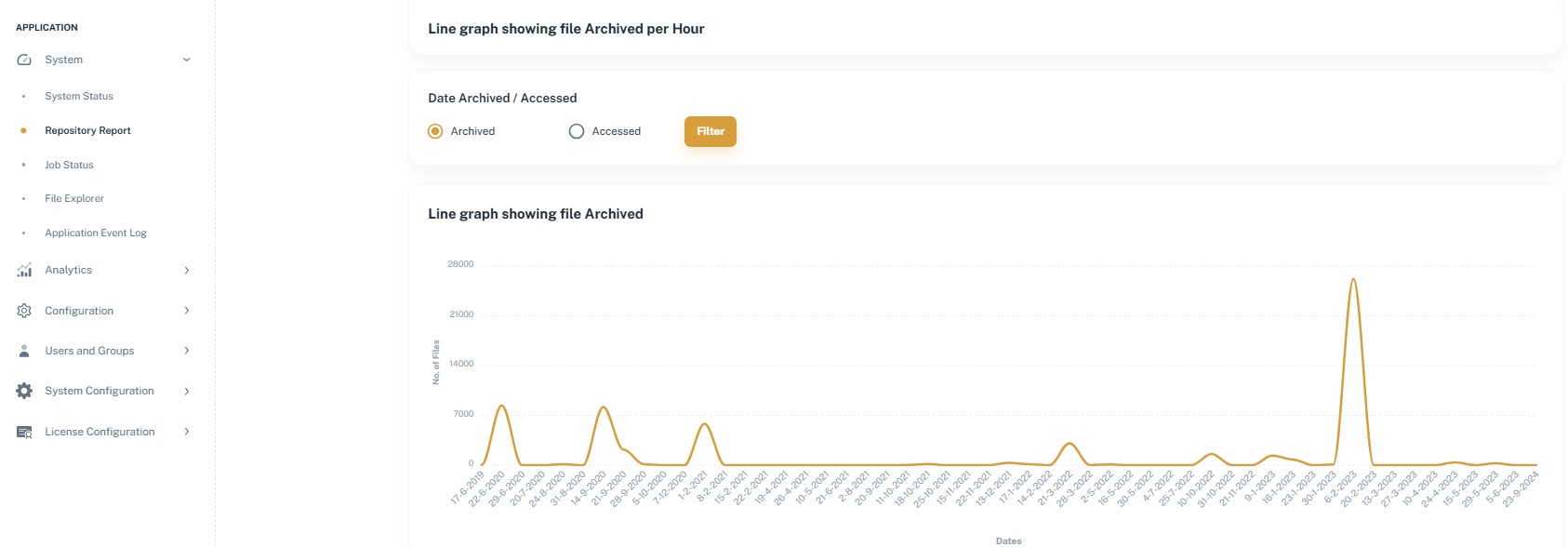In today’s healthcare world, data is more than just numbers on a screen—it’s the lifeblood that keeps everything running smoothly, from patient care to behind-the-scenes operations. Think about it: every time a patient has a check-up, undergoes a scan or fills a prescription, new data is generated.
And with the shift to electronic health records (EHRs), this data isn’t just growing; it’s exploding. While all this information can lead to better patient outcomes and smarter decision-making, it also brings a whole set of challenges.
That’s where healthcare data management steps in. By implementing smart, structured practices, healthcare organizations can manage all this data. Good data management ensures that the right data is in the right place at the right time without compromising patient privacy. In this article, we’ll explore the core concepts of healthcare data management and how they benefit providers and patients alike.
What is Healthcare Data Management?
Healthcare data management is the practice of organizing, storing, and securing the massive volumes of information that healthcare organizations work with daily. It’s a structured approach that ensures data—whether related to patient care, billing, or research—is stored efficiently, accessed easily, and safeguarded. Ultimately, healthcare data management turns raw data into valuable insights that help streamline operations, improve patient care, and meet regulatory standards.
Key Components of Healthcare Data Management
At its core, healthcare data management involves several critical components:
- Data Collection: Gathering accurate and comprehensive information from various sources.
- Data Storage: Organizing and storing data securely, often with backup systems.
- Data Access: Ensuring data is accessible to authorized users when needed.
- Data Security and Compliance: Protecting sensitive data through encryption, access controls, and compliance with regulations like HIPAA.
- Data Archiving and Lifecycle Management: Storing inactive data for long-term use without cluttering active storage.
Types of Data in Healthcare
Healthcare organizations handle a wide range of data types, each with unique requirements and sensitivities. Here are some key types:
Patient Records:
These include everything from basic demographics to medical histories and treatment plans. They’re crucial for providing ongoing, personalized care.
Imaging Data:
Data from X-rays, MRIs, and CT scans are often large files that need rapid access by healthcare staff, presenting specific storage and access challenges.
Billing and Insurance Data:
This data supports the financial side of healthcare, ensuring providers are reimbursed and patients receive accurate billing. Given its sensitive nature, it requires secure handling.
Research Data:
Used in clinical studies and medical research, this data must often be anonymized and stored securely to protect participant privacy.
The Shift from Paper-Based to Electronic Systems
Not so long ago, healthcare facilities relied on physical files, shelves, and filing cabinets to store patient and operational data. This system had clear limitations—files could be lost or damaged, and accessing them was often time-consuming.
The shift to electronic health records (EHRs) has revolutionized data handling, making information far more accessible and easier to manage. However, it also introduces new challenges around storage capacity, data security, and compliance, especially with the exponential growth in data volumes.
Key Concepts in Healthcare Data Management
Data Storage and Archiving:
In healthcare, data storage can be divided into two primary categories: active storage and archiving. Active storage refers to the storage of data that is frequently accessed and currently in use—such as recent patient records or billing information.
Archiving, on the other hand, is the process of moving inactive or older data, like patient records from previous years, to a separate storage location. This data is still valuable but doesn’t need to be immediately accessible in the day-to-day workflow.
Archiving inactive data offers several benefits. It helps reduce the burden on active storage, making systems faster and more efficient. By using healthcare data archiving solutions, healthcare organizations can lower storage costs and shorten backup and recovery times. Additionally, archiving supports compliance by ensuring that older records are retained securely and are accessible when necessary, without cluttering active systems.
Data Security and Compliance
With sensitive patient information and stringent regulatory requirements, data security software is a top priority in healthcare data management. Regulations like HIPAA (Health Insurance Portability and Accountability Act) in the U.S. and GDPR (General Data Protection Regulation) in Europe set standards for how healthcare data should be stored, accessed, and protected. Non-compliance can lead to heavy fines and loss of patient trust, making adherence to these regulations essential.
To secure healthcare data, organizations use measures such as data encryption, which scrambles information so only authorized parties can read it, and access controls, which limit data access to authorized personnel.
Other security practices include regular audits, secure authentication processes, and real-time monitoring of data access. Together, these best practices help protect sensitive information, maintain regulatory compliance, and safeguard patient privacy.
Data Accessibility and Availability
In healthcare, the ability to quickly access archived data is crucial. Doctors may need to reference historical records, and billing departments often require past information for accurate invoicing.
However, accessing archived data shouldn’t disrupt the performance of active systems. Seamless access to archived health data allows healthcare providers to retrieve necessary information without impacting overall system speed or performance. Solutions like hierarchical storage management (HSM) or cloud-based archives can offer quick access to older data without straining active storage systems.
Data Integrity and Quality
Maintaining data integrity and quality is essential for patient safety and informed decision-making. Accurate, complete, and up-to-date information ensures that healthcare providers have reliable data to make treatment decisions.
Errors or missing information can lead to medical mistakes, impacting patient care. Data integrity is also vital for regulatory compliance; many regulations require that healthcare data be accurate and traceable. Regular data validation, data cleaning practices, and version control help uphold data quality and accuracy across healthcare systems.
Data Lifecycle Management
Data lifecycle management is a comprehensive approach to managing data throughout its entire journey, from creation to disposal. In healthcare, data typically begins as an active record, is eventually moved to an archive, and, after a designated period, may be securely disposed of when no longer needed.
Proper lifecycle management ensures that data is handled efficiently at every stage, helping organizations optimize storage costs, maintain security, and ensure compliance. Effective lifecycle management also simplifies the retrieval and archiving process, making it easier for healthcare providers to access relevant data and focus on patient care.
Benefits of Effective Data Management in Healthcare
With effective data management, healthcare organizations can streamline their operations, improve patient care, and strengthen security measures. Let’s dive into the specific ways that managing data well can transform healthcare systems and outcomes.
Improved Operational Efficiency
Data management improves operational efficiency across healthcare organizations significantly. By organizing data storage systems and archiving inactive data, facilities can reduce storage and infrastructure costs.
Rather than continuously expanding storage capacity to keep up with data growth, hospitals and clinics can offload older data, freeing up active storage for current needs. This approach also results in faster data retrieval and backup times, allowing healthcare staff to quickly access information when needed and streamlining backup processes, which is essential for smooth operations and emergency preparedness.
Enhanced Patient Care and Outcomes
When data is well-managed, it becomes a powerful tool for improving patient care and outcomes. With data readily available, healthcare providers can make better-informed decisions based on a complete view of a patient’s medical history, even from older records. This holistic perspective is critical for diagnosing and developing tailored treatment plans.
Additionally, easier data sharing between departments or even across facilities ensures that each team member or specialist involved in a patient’s care has access to the same up-to-date information, promoting cohesive and coordinated care. With data management in place, every interaction with a patient can be built on accurate and accessible information, enhancing the quality of care delivered.
Strengthened Security and Compliance
In the healthcare field, safeguarding sensitive patient information is paramount. Effective data management reinforces security by implementing structured security measures, such as encryption, access controls, and regular audits, that minimize the risk of data breaches.
By organizing data and archiving inactive information, organizations can also simplify audits and compliance reporting. Meeting regulatory requirements—like HIPAA in the U.S. or GDPR in Europe—becomes more manageable with secure, well-organized data systems that ensure patient data is consistently protected and easily accessible for compliance checks. Ultimately, this level of security builds patient trust and maintains the organization’s reputation.
Optimized Resource Utilization
With an efficient data management system, healthcare organizations can optimize their resources. Reduced pressure on active storage systems by archiving inactive data means there’s less strain on IT infrastructure, resulting in smoother day-to-day operations.
This also allows for better utilization of IT resources, as managing data flows more efficiently and IT teams can focus on strategic tasks rather than constantly managing storage issues or troubleshooting performance lags. By streamlining data handling, healthcare organizations make the most of their investments in storage and infrastructure while preparing for growth.
Challenges in Healthcare Data Management
Navigating healthcare data management comes with its share of challenges, each of which requires careful planning and strategic solutions.
Data Growth and Scalability
One of the biggest challenges in healthcare data management is keeping up with the explosive growth of healthcare data. With every patient interaction, new data is generated, including electronic health records, imaging files, and lab results. As this data accumulates, healthcare providers face increasing pressure to expand their storage solutions.
However, simply adding storage capacity isn’t enough—organizations need scalable healthcare data management strategies that allow them to organize, archive, and retrieve data efficiently. Archiving older, inactive records helps to manage this growth, but scaling these solutions sustainably is a complex task that requires ongoing strategy and investment.
Security and Privacy Risks
Healthcare data is particularly sensitive, and protecting it against cyber threats is a constant challenge. With cyber threats evolving daily, healthcare organizations must stay vigilant against data breaches and attacks. The stakes are high; a breach could lead to the exposure of patient information, heavy regulatory fines, and loss of patient trust.
Ensuring the security of healthcare data means implementing a multi-layered approach, including encryption, strict access controls, ransomware recovery, and regular security audits. However, with new types of threats continually emerging, maintaining effective security is an ongoing battle that requires up-to-date technology and protocols.
Integration with Existing Systems
Another challenge is integrating new data management solutions with existing, often outdated, systems. Many healthcare organizations rely on legacy systems that weren’t designed for the complexities of today’s data needs. Aligning new technologies with these older systems can be a technical challenge, as compatibility issues and limited interoperability often arise.
Additionally, transitioning to new data solutions without disrupting workflows is difficult. For a successful integration, healthcare organizations need robust planning and flexibility to ensure that new data management solutions can work seamlessly within the existing infrastructure, supporting both current and future needs.
How ShareArchiver Supports Healthcare Data Management
ShareArchiver provides healthcare organizations with a robust, scalable solution to efficiently manage and protect their data. By offering seamless integration with existing systems, ShareArchiver helps facilities archive inactive data, freeing up valuable storage space while maintaining easy access to historical records. With advanced security features like encryption and role-based access, ShareArchiver ensures sensitive data is protected and complies with healthcare regulations such as HIPAA and GDPR.
Additionally, ShareArchiver’s cloud and on-premises options allow healthcare providers to choose a storage model that fits their specific needs, supporting growth and flexibility. With streamlined data management and archiving, ShareArchiver enables healthcare organizations to focus more on patient care and less on data storage challenges.
Conclusion
In an industry as data-intensive as healthcare, effective data management is no longer optional—it’s essential. By implementing structured data practices, healthcare organizations can improve operational efficiency, enhance patient care, ensure regulatory compliance, and safeguard sensitive information. As healthcare data continues to grow, investing in robust data management strategies will be key to achieving sustainable, secure, and patient-centered healthcare.









